#Yayoiperiod
Explore tagged Tumblr posts
Text
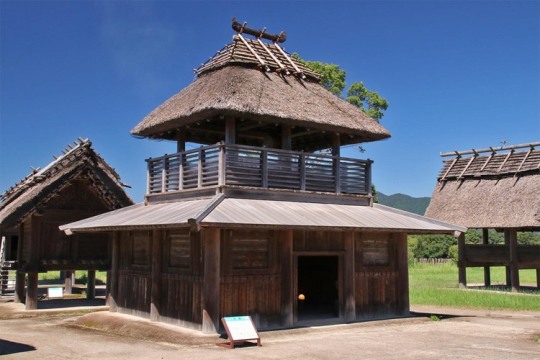

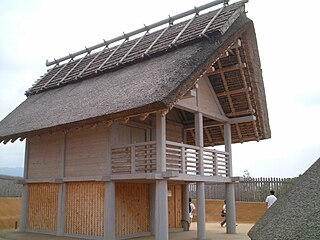

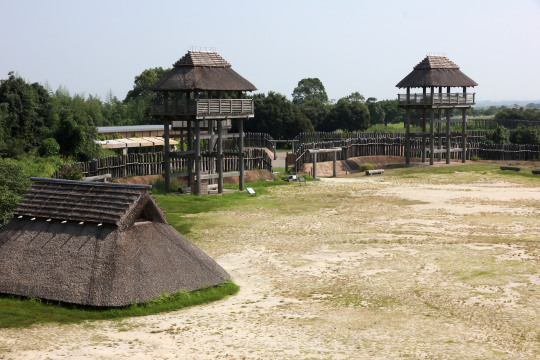
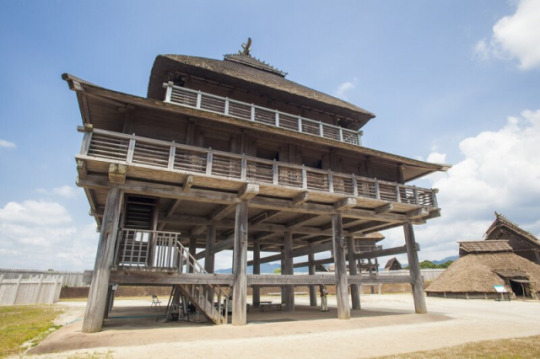
Sean bienvenidos, japonistasarqueológicos, a una nueva entrega de arqueología nipona, una vez dicho esto pónganse cómodos qué empezamos. - Nos volvemos a trasladar a la prehistoria japonesa que, cada día, nos sorprende con un nuevo hallazgo arqueológico. Las ruinas de Yoshinogari, datan del periodo Yayoi(III-IV) pero en este caso del Yayoi tardío y se localizan en la prefectura de Saga¿Cuándo llegó el arroz a japón? Y¿por dónde llegó? Hay dos teorías: una que llegó de china y la otra desde Corea hasta la isla de Kyushu a través del mar de Ariake. El enorme asentamiento está rodeado por tres fosos y es la raíz de los castillos en Japón, ha sido seleccionado como uno de los 100 castillos más famosos de Japón. - En el periodo Yayoi, se caracteriza porque es cuando aparecen las clases guerras y las clases dirigentes a raíz de la acumulación de poder, esto corresponde a los jefes locales, por ejemplo: La residencia de la clase dominante en el recinto interior sur, no confundir con realeza japonesa, hay que recordar que a los poblados se les instalaba un punto religioso, por aquella época predominaba el Sintoismo como: es el caso del santuario principal construido en el recinto interior norte. - El yacimiento cuenta con atalaya del recinto interior sur, de carácter defectivo, al sur se encuentra el pueblo con viviendas tipo foso y almacenes para guardar el arroz rojo que era el que se cultivaba en aquella época y en la ciudad de Karatsu, también en la prefectura de Saga, se encuentran las ruinas de Nabatake, las ruinas de cultivo de arroz más antiguas de Japón. - Durante el periodo Yayoi y Kofun tuvieron lugar una serie de migraciones desde la península de corea, esto trajo consigo que las poblaciones coreanas y japonesas de la zona se mezclaran generando mestizos, además de transmitir sus conocimientos de la agricultura. - Espero que os haya gustado y nos vemos en próximas publicaciones, que pasen una buena semana. Welcome, Japanese archaeologists, to a new instalment of Japanese archaeology, so make yourselves comfortable and let's get started. - We move back to Japanese prehistory, which surprises us every day with a new archaeological find. The ruins of Yoshinogari, dating from the Yayoi period (III-IV) but in this case from the late Yayoi period, are located in the prefecture of Saga When did rice arrive in Japan? And where did it arrive? There are two theories: one that it came from China and the other from Korea to the island of Kyushu via the Ariake Sea. The huge settlement is surrounded by three moats and is the root of castles in Japan, it has been selected as one of the 100 most famous castles in Japan. - The Yayoi period is characterised by the emergence of the warring and ruling classes as a result of the accumulation of power, this corresponds to the local chiefs, for example: The residence of the ruling class in the southern inner precinct, not to be confused with Japanese royalty, it should be remembered that the villages had a religious point installed, at that time Shintoism predominated, such as the main shrine built in the northern inner precinct. - The site has a watchtower in the southern inner enclosure, which is defective, to the south is the village with moat-like dwellings and warehouses for storing the red rice that was cultivated at the time, and in the town of Karatsu, also in Saga Prefecture, are the ruins of Nabatake, the oldest rice cultivation ruins in Japan. - During the Yayoi and Kofun period a series of migrations from the Korean peninsula took place, which resulted in the mixing of the Korean and Japanese populations in the area and the passing on of their knowledge of agriculture. - I hope you liked it and see you in future posts, have a good week.
#日本#韓国#考古学#遺跡#佐賀県#九州#歴史#先史#新石器時代#文化#吉野ヶ里遺跡#地理#弥生時代#有明海#唐津市#鍋岳遺跡#ユネスコ#photo#japan#archaeology#archaeologicalrests#Prefectureofaga#Kyushu#history#prehistory#neolithic#riceculture#Yoshinogariruins#geography#yayoiperiod
36 notes
·
View notes
Photo
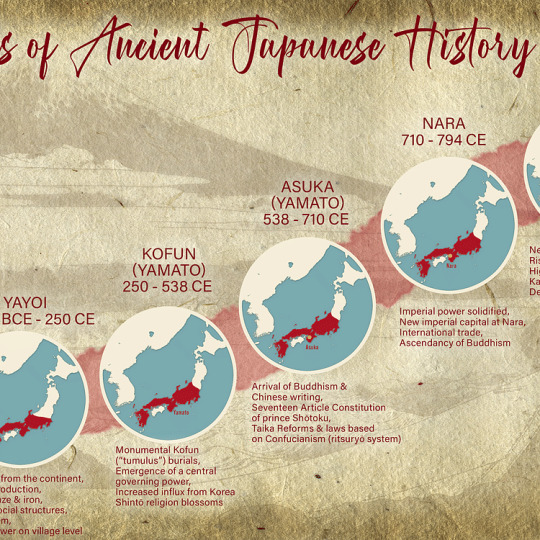
Periods of Ancient Japanese History
An image illustrating the progression of periods in ancient Japanese civilization from its pre-historic settling by paleolithic migrants from northeast Asia. Through profound domestic evolution and constant international exchange during the main eras of its colorful development (Jōmon, Yayoi, Kofun, Asuka, Nara, and Heian), Japan has seen the rise and fall of emperors, the bloom of the Shinto religion, and multiple interpretations of Buddhism, rule by samurai warriors, some of the oldest pottery vessels and the world’s first novel.
50 notes
·
View notes
Photo
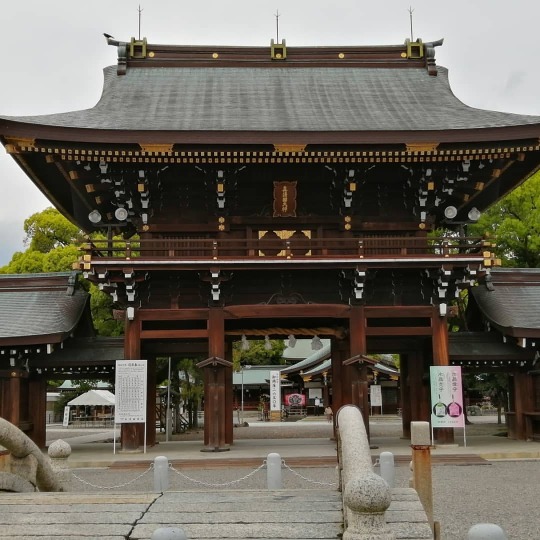
真清田神社 ご鎮座2650年 御祭神 天火名命(あめのほあかりのみこと) 天照大神 神武天皇の時代からと由緒ある神社 都心にありながら、入ると別空間で圧倒されました。 素晴らしい気を感じる神社でした。 #神社巡り #天照大神 #真清田神社 #気の流れ #2650年前 #神武天皇 #神社仏閣 #別空間 #癒やし #縄文時代 #弥生時代 #由緒ある神社 Sanjida Shrine the year 2650 when the Emperor was enshrined Festival god Tenfire famous life (Ame no Hoakari no Mikoto) Amaterasu Omikami a shrine dating back to the days of Emperor Jinmu I was overwhelmed by another space even though I was in the center of the city. It was a shrine where I felt a wonderful atmosphere. #Visitingshrines #AmaterasuOkami #MashidaShrine #Flowofmind #2650yearsago #Emperor Jinmu #Shrinesandtemples #Anotherspace #Healing #Jomonperiod #Yayoiperiod #historicshrine https://www.instagram.com/p/CNo1iSQBF4w/?igshid=1ouo75m7vb3o7
#神社巡り#天照大神#真清田神社#気の流れ#2650年前#神武天皇#神社仏閣#別空間#癒やし#縄文時代#弥生時代#由緒ある神社#visitingshrines#amaterasuokami#mashidashrine#flowofmind#2650yearsago#emperor#shrinesandtemples#anotherspace#healing#jomonperiod#yayoiperiod#historicshrine
0 notes
Text




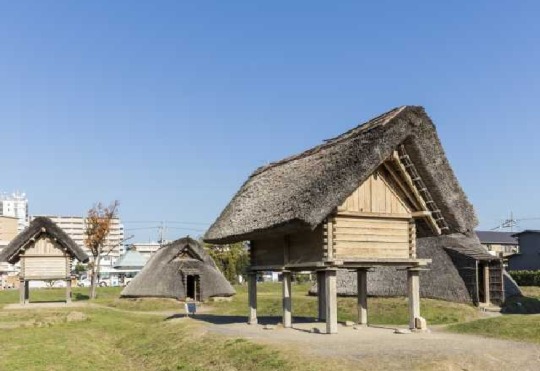

日本の考古学者を迎えての新しい合成回です。今回は登呂遺跡についてお話します。どうぞごゆっくりとお過ごしください。それでは、始めましょう。 - 中部地方静岡市にある登呂遺跡は、水害の被害を受けながらも、弥生時代に築かれ、1世紀から5世紀の弥生時代後期から古墳時代まで続く遺跡です。 - 遺跡が発見されたのは、昭和に当たる1943年の2ww中���。 戦闘機のプロペラを作るための弾薬工場が建設されていたのですが、偶然にも地中から粘土や木製のものが見つかり、それ以来1999年代まで発掘調査が行われていました。 もっと話を聞きたいですか? コメントで教えてください。 - お気に召していただけたなら幸いです。良い一週間をお過ごしください。また、日出ずる国から今後の記事でお会いしましょう。 - Sean bienvenidos japonistasarqueológicos a una nueva entrega sintética de arqueología japonesa, en la cual hablaremos de Ruinas de Toro, una vez dicho esto pónganse cómodos que empezamos. - Ruinas de Toro, se localiza en la ciudad de Shizuoka, en la región de Chūbu, se construyó en el periodo Yayoi y continuaron desde finales del período dicho periodo hasta el período Kofun siglos I al siglo V, a pesar de que fueron dañadas por las inundaciones. - Las ruinas fueron descubiertas en plena 2ww en 1943 lo que corresponde a la era showa, Se estaba construyendo, una fábrica de municiones para fabricar hélices para aviones de combate y accidentalmente encontramos objetos de barro y madera en el suelo, desde entonces se excavó hasta los años 1999. ¿Os gustaría que os contará más? déjenmelo saber en los comentarios. - Espero que os haya gustado os deseo una buena semana y nos vemos en próximas publicaciones del país del sol naciente. - Welcome Japanese archaeologists to a new synthetic installment of Japanese archaeology, in which we will talk about the Toro Ruins, so make yourselves comfortable and let's get started. - Toro Ruins, located in the city of Shizuoka, in the Chūbu region, was built in the Yayoi period and continued from the late Yayoi period to the Kofun period from the 1st to the 5th century, although it was damaged by floods. - The ruins were discovered in the middle of the 2ww in 1943 which corresponds to the showa era, An ammunition factory was being built to make propellers for fighter planes and we accidentally found clay and wooden objects in the ground, since then it was excavated until the 1999's. Would you like me to tell you more? Let me know in the comments. - I hope you liked it, I wish you a good week and see you in future posts from the land of the rising sun. - More information: https://www.shizuoka-toromuseum.jp/zhcn/
#japan#shizuokacity#shizuokaprefecture#ToroRuins#showaperiod#chūburegion#archaeology#unesco#yayoiperiod#prehistory#kofunperiod#日本#静岡市#静岡県#登呂遺跡#昭和時代#中部地方#考古学#ユネスコ#弥生時代#先史時代#古墳時代
40 notes
·
View notes
Text
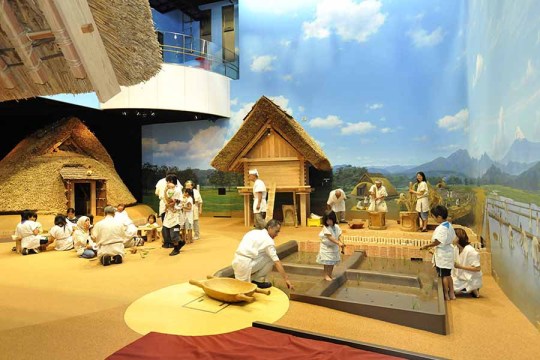
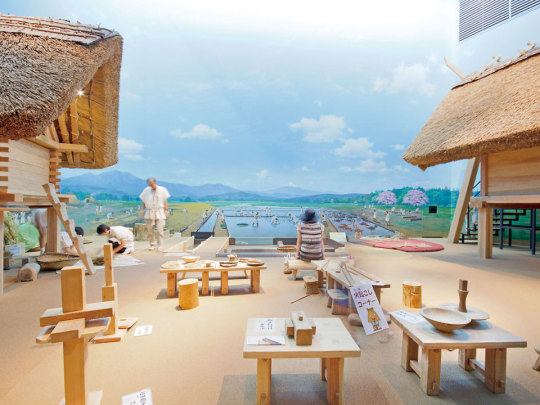

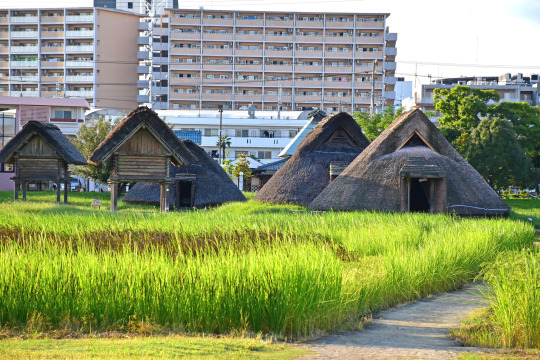
Sean bienvenidos japonistasarqueológicos a una nueva entrega de arqueología japonesa, en la cual hablaremos de Ruinas de Toro, una vez dicho esto pónganse cómodos que empezamos. - Ruinas de Toro, se localizan en la ciudad de Shizuoka, en la región de Chūbu, se construyeron en el periodo Yayoi y continuaron desde finales de dicho período e incluso se usaron el período Kofun siglos I al siglo V, a pesar de que fueron dañadas por las inundaciones. - En la publicación anterior hablamos, de que las ruinas fueron descubiertas en plena 2ww en 1943, lo que corresponde a la era showa, ya que se estaba construyendo, una fábrica de municiones para fabricar hélices para aviones de combate y accidentalmente encontramos objetos de barro y madera en el suelo, desde entonces se excavó hasta los años 1999. - Para continuar nuestro viaje por la arqueología de la posguerra, nos vamos a trasladar a la década de 1947, fue cuando se realizaron las excavaciones en masa hasta mitad del siglo pasado, en la que se descubrieron: 12 viviendas, 2 almacenes y 8 hectáreas de arrozales, del periodo Yayoi que datan de hace 2000 años de antigüedad. - También aparecieron: campanas de bronce, el lugar se reconstruyo en 1951. Por el motivo de una autopista en 1965 salieron más restos arqueológicos a lo que se le llama arqueología de salvamento, al final de 1999, se actuaron más excavaciones en otras partes del país en Kyushu, kinki y Tohoku hasta 2003. - Espero que os haya gustado os deseo una buena semana y nos vemos en próximas publicaciones del país del sol naciente.
-
日本の考古学者の皆さん、ようこそ!今回は登呂遺跡についてお話しします。そう言ったら、くつろいでいただき、さっそく始めましょう。-中部地方の静岡市にある登呂遺跡は、弥生時代に築かれ、弥生時代後期から続き、1世紀から5世紀にかけての古墳時代にも、洪水で被害を受けながらも利用されていた。-前号では、昭和に相当する2ww中頃、戦闘機のプロペラを製造する軍需工場が建設されている最中に発見され、偶然、土や木のオブジェが地面に落ちていたことを紹介したが、その後、平成11年代まで発掘調査が行われた。-戦後考古学の旅を続けるために、1947年の10年間に移り、前世紀半ばまで大規模な発掘調査が行われ、2000年前の弥生時代の住居12棟、倉庫2棟、水田8ヘクタールが発見された。-銅鐸も発見された。遺跡は1951年に再建された。1965年の高速道路建設により、さらに多くの遺跡が発掘され、サルベージ考古学と呼ばれている。 1999年末には、2003年まで九州、近畿、東北の他の地域でも発掘調査が行われた。-お気に召していただけたなら幸いである。良い一週間をお過ごしください。
-
Welcome Japanese archaeologists to a new installment of Japanese archaeology, in which we will talk about the Toro Ruins, and once we have said that, make yourselves comfortable and let's get started. - Toro Ruins, located in the city of Shizuoka, in the Chūbu region, were built in the Yayoi period and continued from the late Yayoi period and were even used in the Kofun period from the 1st to the 5th century, although they were damaged by floods. - In the previous publication we mentioned that the ruins were discovered in the middle of the 2ww in 1943, which corresponds to the showa era, as a munitions factory was being built to manufacture propellers for fighter planes and we accidentally found objects of clay and wood on the ground, since then it was excavated until the 1999s. - To continue our journey through post-war archaeology, we will move to the decade of 1947, when mass excavations were carried out until the middle of the last century, in which 12 dwellings, 2 warehouses and 8 hectares of rice fields were discovered, from the Yayoi period dating back to 2000 years ago. - Also discovered: bronze bells, the site was rebuilt in 1951. Due to the construction of a motorway in 1965, more archaeological remains were unearthed, which is called salvage archaeology. At the end of 1999, further excavations were carried out in other parts of the country in Kyushu, Kinki and Tohoku until 2003. - I hope you liked it, I wish you a good week and see you in future publications from the land of the rising sun.
-
More information: https://www.shizuoka-toromuseum.jp/zhcn/
#japan#shizuokacity#shizuokaprefecture#ToroRuins#showaperiod#chūburegion#archaeology#unesco#yayoiperiod#prehistory#kofunperiod#日本#静岡市#静岡県#登呂遺跡#昭和#中部地方#考古学#ユネスコ
43 notes
·
View notes
Text



Capítulo 1 Introducción: Sean bienvenidos japonistasarqueológicos a una nueva entrega síntesis en la que abordaremos la transición del período Jomon al período Yayoi ¿Posible fusión cultural? dicho esto pónganse cómodos que comenzamos. - El cultivo del arroz, entró a japón por desde Corea a través de la península de Kyushu,dicho periodo tuvo lugar en el siglo IV d.c y tardaría 800 años en extenderse por el resto de Japón, excepto Hokkaido( por la dureza del clima) - Según: “El Museo Nacional de Historia Japonesa realizó una medición 1 de carbón vegetal adherido a la cerámica Yayoi y descubrió que el arroz más antiguo data del año 1000 (en 2002) - Fusión de la cultura Jomon y la cultura Izumo: El mito de los dioses Izumo que nacieron durante este período, están representados por Okuninushi dios de la tierra y Sukunahiko para el desarrollo de la vida. - Espero que os haya gustado y nos vemos en próximas publicaciones de japón, que pasen una buena semana. - 第1章 はじめに 縄文時代から弥生時代への移行-文化的融合の可能性-」をテーマに、日本考古学者による新しい総集編をお届けします。 ということで、どうぞごゆっくりお過ごしください。 - 稲作は紀元4世紀に朝鮮半島から九州半島を経て日本に入り、800年かけて北海道を除く日本全国に広まった(気候が厳しかったため)。 - による。"国立歴史民俗博物館が弥生土器に付着した炭の測定1を行ったところ、最も古い米は1000年(2002年)に遡ることが判明した"。 - 縄文文化と出雲文化の融合:この時代に生まれた出雲の神々は、大地の神であるオオクニヌシと生命を育むスクナヒコに代表される神話であり、この神話に登場する神々は、縄文文化、出雲文化を融合させたものである。 - 次の日本語の記事でお会いしましょう。 - Chapter 1 Introduction: Welcome to Japanesearchaeology to a new summary delivery in which we will address the transition from the Jomon period to the Yayoi period. Possible cultural fusion? Having said that, make yourself comfortable and let's begin. - The cultivation of rice entered Japan from Korea through the Kyushu peninsula. This period took place in the 4th century AD and would take 800 years to spread to the rest of Japan, except Hokkaido (due to the harsh climate). - According to: “The National Museum of Japanese History conducted a measurement 1 of charcoal attached to Yayoi pottery and discovered that the oldest rice dates back to the year 1000 (in 2002) - Fusion of Jomon culture and Izumo culture: The myth of the Izumo gods who were born during this period, are represented by Okuninushi, god of the earth and Sukunahiko for the development of life. - I hope you liked it and see you in future posts from Japan, have a good week.
#Yayoiperiod#Jomonperiod#Izumoculture#Okuninushi#Sukunahiko#Kunizukuri#ricecultivation#Izumoprovince#Kofunperiod#culturalfusion#radiocabondating#NationalMuseumofJapaneseHistory#prehistory#Japanesearchaeology#unesco.#弥生時代#縄文時代#出雲文化#オオクニヌシ#スクナヒコ#クニヅクリ#稲作#出雲地方#古墳時代#文化融合#ラジオ体操#国立歴史民俗博物館#先史時代#日本研究考古#ユネスコ。
17 notes
·
View notes
Text
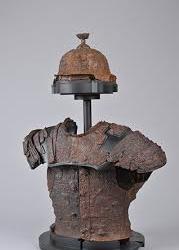
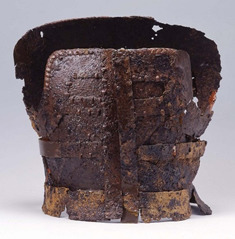
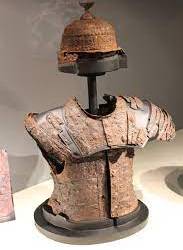


Sean bienvenidos japonistasarqueológicos, a una nueva entrega de arqueología japonesa, una vez dicho esto pónganse cómodos que empezamos. - Sí, hablamos de la armadura japonesa, se nos viene a la cabeza, la más característica, la de los samurais. ¿Hay alguna armadura más antigua? Sí, datan del periodo kofun o protohistorico, se sabe que en periodos anteriores las tenían de madera por los pocos restos que se han conservado al yayoi, ya que el Jomon fue un periodo de paz y no hay indicios de violencia. - La imagen de estas armaduras la tenemos en las famosas figuras, haniwa hechas de arcilla y utilizadas para los enterramientos, aunque todavía siguen siendo un misterio, estas armaduras estaban manufacturadas de hierro. - Espero que os haya gustado y nos vemos en próximas publicaciones, que pasen una buena semana. - 日本の考古学者たちよ、ようこそ。そう言われたら、くつろいで、さっそく始めましょう。 - そうですね、日本の鎧について話しているのですが、一番特徴的なのは侍の鎧ですね。 - この鎧のイメージは、土で作られ、埋葬に使われた有名な埴輪に見ることができますが、まだ謎が多いのですが、この鎧は鉄で作られていたのですね。 - 気に入っていただけたでしょうか、また今後の記事でお会いしましょう、良い一週間をお過ごしください。 - Welcome, Japanese archaeologists, to a new installment of Japanese archaeology, and once that's been said, make yourselves comfortable and let's get started. - Yes, we are talking about Japanese armour, the most characteristic one comes to mind is that of the samurai, are there any older armour? yes, they date from the Kofun or proto-historic period, we know that in earlier periods they were made of wood because of the few remains that have been preserved in the yayoi, since the Jomon was a period of peace and there is no evidence of violence. - The image of this armour can be seen in the famous haniwa figures, made of clay and used for burials, although they are still a mystery, these armours were made of iron. - I hope you liked it and see you in future posts, have a nice week.
#philosophy#art#日本#歴史#弥生時代#先史時代#古墳時代#ユネスコ#鎧#芸術#写真#人類の遺産#侍#埴輪#彫刻#トムス#武士#金属器時代#japan#history#yayoiperiod#prehistory#kofunperiod#unesco
16 notes
·
View notes